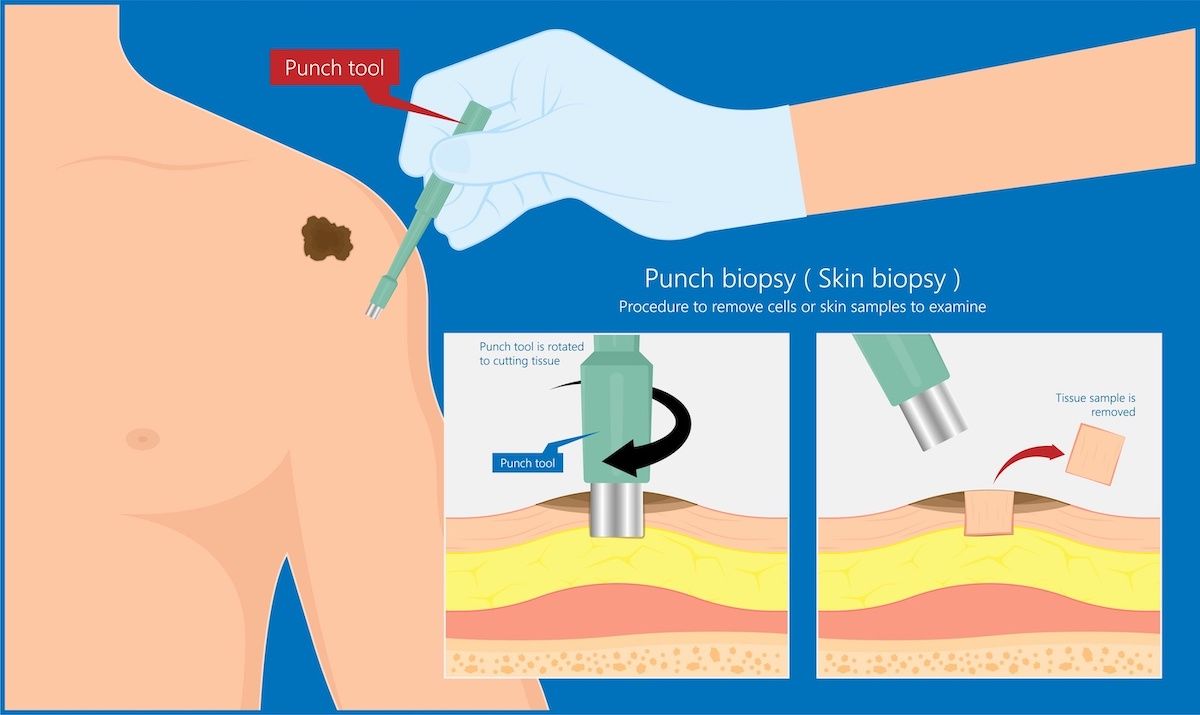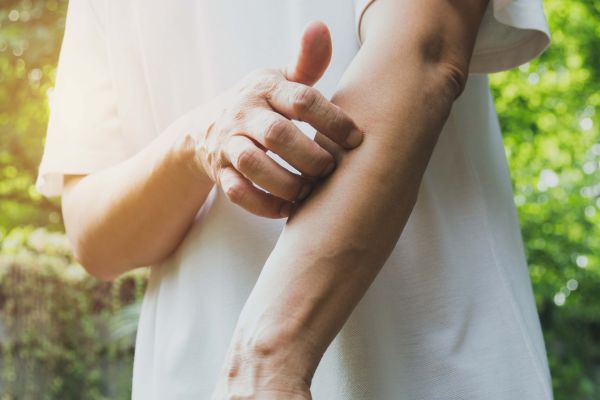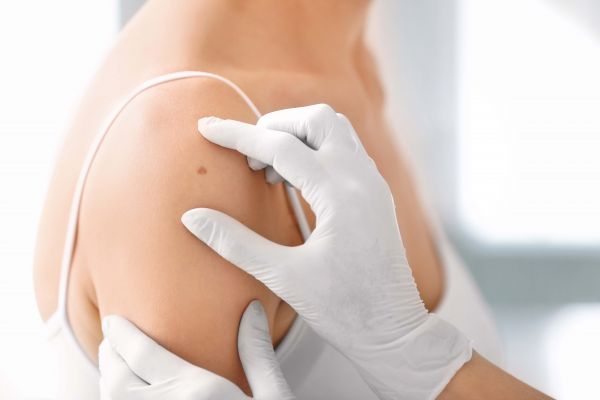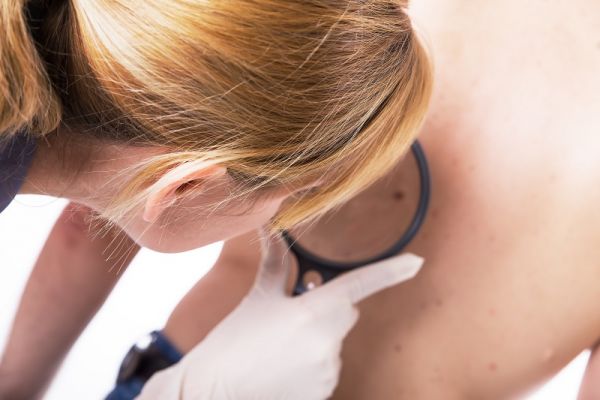This procedure removes suspicious skin cells to be examined for cancer.
Skin cancer is the most common cancer in the United States. The American Academy of Dermatology estimates that one in five Americans will develop skin cancer in their lifetime. Remarkably, it is estimated that approximately 9,500 people in the U.S. are diagnosed with skin cancer every day.
The good news behind those alarming numbers, is that basal cell carcinoma and squamous cell carcinoma, the two most common forms of skin cancer, are highly treatable and rarely life-threatening if found early. Even for people diagnosed with melanoma — a more dangerous form of skin cancer — when it’s detected and treated before it spreads to the lymph nodes, five-year survival rate is 99%.
Diagnosing skin cancer early — and accurately — is the key to treating it most effectively, and perhaps the most important tool for getting the accurate diagnosis is a biopsy technique called a punch biopsy.
What is a punch biopsy?
Any type of biopsy is a procedure to remove cells to examine under a microscope for diagnostic purposes. When those cells are located in or on the skin, dermatologists often use a punch biopsy.
“A punch biopsy is a type of skin biopsy which examines the full thickness of the skin using a circular blade,” explains Lauren Mancuso, Physician Assistant at Roswell Park Dermatology, a Roswell Park Care Network location in Depew, NY. Another option, called a shave biopsy, removes only the upper layers of the skin.
“The benefit of doing a punch biopsy verses a shave biopsy is that more information can be obtained from the tissue because you can see the deeper layers of the skin,” Mancuso says.
Punch biopsies also may be used to detect vulvar and cervical cancers and to check for certain skin conditions and changes that may lead to cancer.
What to expect during a punch biopsy
In a punch biopsy procedure, the physician uses a hollow, circular scalpel, also called a trephine, which is attached to a pencil-like handle to cut into and around a suspicious skin lesion. Depending on the lesion, the biopsy can be anywhere from 3 to 8 millimeters (mm) across. A pencil eraser, for example, is 5 mm.
The procedure involves cleaning and disinfecting the skin first, then numbing the area with a local anesthetic such as lidocaine, Mancuso says. “The circular blade is then rotated through the dermis, epidermis and into the subcutaneous fat.” The surgeon turns the blade clockwise and counterclockwise to “corkscrew” into the skin about 3 to 4 mm deep. The tool then pulls out this core of tissue sample, which is then sent out to the pathology lab to be examined, under a microscope, for signs of cancer and other diseases. At Roswell Park, the pathologists doing the analysis are dermatopathologists, with special training and experience in skin diseases.
Why Roswell Park for skin cancer?
Learn more about the multidisciplinary cancer care that integrates the expertise from several specialists, including dermatologists, dermatopathologists, plus surgical, medical and radiation oncologists.
Learn MoreAfter the removal of the lesion and core tissue sample, the skin will then be closed with a suture or, if small enough, left open to heal with antibiotic ointment and a dressing. There is usually little or no scarring. “The punch biopsy takes a few weeks to heal, and the biopsy results are back in about one to two weeks,” she says.
Usually, one punch biopsy is sufficient. “However, depending on the discretion of your provider, more biopsies may be obtained” if the results are inconclusive, Mancuso says.
Does a punch biopsy hurt?
Punch biopsies are rarely painful thanks to the anesthesia used to numb the area, Mancuso says. The actual cut into the skin is done slowly rather than a “punch” as the name implies, although it takes just a few seconds. The entire procedure is over in minutes. There may be some discomfort after the anesthesia wears off, but this is typically treated with a simple, over-the-counter pain reliever.
“It is normal to be apprehensive about this procedure,” she says. “However, punch biopsies are minimally invasive, cause very minimal discomfort to the patient and require very little downtime.”
What happens after the biopsy?
If the growth is benign (not cancerous), treatment will depend on the lesion, the doctor’s concerns and the patient’s cosmetic preferences. Some patients leave it alone, while others may want it removed anyway. If the biopsy and pathology reveal that the lesion is a cancer, the dermatologist can remove it.
Depending on the size, location and stage of the cancer, it may need a more extensive surgical procedure, such as Mohs surgery, a meticulous process in which the surgeon removes one layer of skin at a time, checking each under microscope during the surgery, until all the cancer is gone. Mohs surgery provides the highest cure rate with the smallest scar possible. It’s an important option for cosmetically and functionally sensitive areas, such as the nose, lips, ears, around the eyes, hands, feet and genitals.
If the biopsy diagnoses other possible skin disorders, such as inflammatory lesions and chronic skin problems, Roswell Park’s dermatology team treats these, too.




